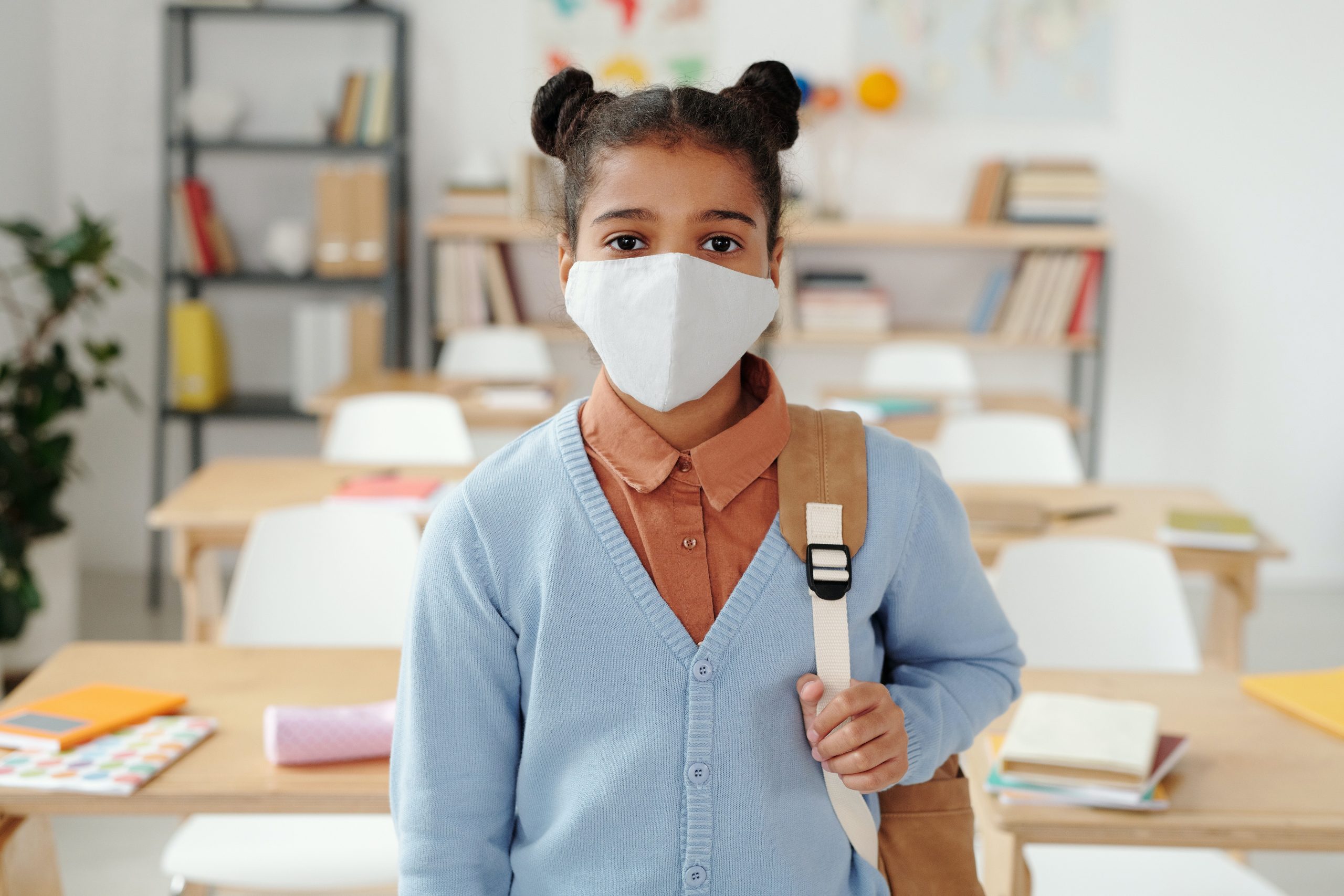This time in history is unlike any other where students across the nation are being taught by their teachers from home for an extended time frame, and coming to school wearing a protective mask, all while practicing social distancing and superb hygiene.
This past spring, students in the U.S. engaged in distance learning and were asked to self-regulate, manage their schedule, attend all of their online classes, stay organized, find a quiet place at home and remain focused, all while completing their assignments on a regular basis – with minimal, if any, face-to-face instruction from their teachers.
This school year, many school districts across America decided to slowly reintroduce students back into the classroom by engaging in the hybrid learning model (where students split their time between online and in person learning). As a middle school teacher, I can speak to the challenges that we face as educators in trying to reach all of our students (which now include a number of full distance learners) and connect with them to develop meaningful relationships.
THE REALITY OF TEACHING IN COVID TIMES
Teachers have been trained and equipped with a plethora of technological tools to try and best engage students in learning. However, they are posed with the added challenge to simultaneously manage students in their classroom, while also managing a group of students online. The analogy I liken it to is a wry, darkly humorous one. So please bear with me and hopefully you get a laugh out of it. At the same time, you will begin to realize the reality that educators these days are faced with on a day-to-day basis.
Teachers have become the all-in-one package overnight. Whether they dreamed about it or not, they have become the host of their own live show (teacher-directed learning – in large part) – doing more talking to their students, while searching for moments to take a breath and rest their constant vocal projections through their mask. They have also become content creators of brand new, untested, dynamic, largely technology-based lesson plans, as well as production managers (getting all of the tabs up and ready to go in a certain sequence when presenting the lesson), sound engineers (for best microphone pickup), webcam choreographers (best angle, both static and dynamic views), technology specialists/troubleshooters (being able to navigate tech issues on the fly), supervisors (of both online and in person learners), mental health counselors (being able to gauge if anyone is feeling anxious/uncomfortable – especially in person with long durations of wearing masks, while not being able to read their facial expressions due to their masks) and having only one-take as they give their entire being to their best performances for their students who appear on their screens as if they were “The Brady Bunch” on steroids (a.k.a. the online students) viewed in their tic-tac-toe-like tiles.
Now, it is up to the teacher to engage these students at home, while also getting them to interact with the “live in studio audience” participants (in class students) as best as possible. It is quite the sci-fi experience that no teacher or student could have ever dreamt of and live this each and every day, in “the land of uncertainty” not knowing where all of this is headed. Please let me know if I missed something in our new job description (which is always in flux anyhow)!
In the meantime, parents are busy on so many fronts – trying to make a living, putting food on the table, helping with the “distance learning” and keeping it all together in their own lives during these challenging times. Despite the challenges that we all face, it is important to be a source of strength and stability for our children. With that said, below are some tips to keep your child engaged and organized throughout the school year.
TIPS FOR HELPING YOUR CHILD STAY ENGAGED AND ORGANIZED THIS SCHOOL YEAR
1. Get a child into a routine early on.
Routine is paramount to success. Students should be going to bed and getting up close to the same time each day during the school week. It is important for children to obtain the recommended amount of sleep each night for their age. Furthermore, there shouldn’t be any electronic use at least one hour prior to sleep. It would be best to remove electronics from the bedroom in order to prevent any blue light cognitive arousal, which would disrupt their melatonin secretion and could lead to inadequate sleep. Also, eating a well-balanced breakfast rich in all of the food groups will provide a child with the energy they need to sustain them through the day.
Benefits of getting a child into a routine:
- Reduced stress – when a child has a predictable daily routine, they feel safe and secure, which puts them at ease.
- Increased self-esteem and confidence – knowing what to expect can boost a child’s confidence and feeling of being in control of the situation. It allows them to know what tasks need to be accomplished and by when.
- Better time-management and self-discipline – routine, by design, promotes a schedule and habits of practice that tend to generate positive outcomes (e.g. washing hands before you eat, brushing teeth after you eat a meal, doing homework the same time each day, etc.)
- Promotes healthy lifestyle habits (eating, exercising, sleeping, and thinking well)
- Improves quality family time – engaging in a family game, movie night, arts and crafts project, walk in the neighborhood, family chores, etc.
2. Take frequent study breaks.
Typically speaking, frequent breaks help students get mentally and physically recharged. It is also an opportunity for kids to socialize with their peers. Nowadays, these breaks at school are coined “mask breaks” and involve kids being at least six feet away from their peers. However, for distance learners at home, this can help alleviate some of the mental fatigue and frustration associated with being in front of a computer screen for so long. It can also help children better self-regulate.
Ultimately, these study breaks can prevent the often dreaded “homework struggles” from ensuing between many parents and their children. These breaks can be physical in nature such as playing, running around, or could just be relaxing, such as listening to or playing music, drawing, singing, or doing a quiet activity such as reading a pleasure book (anything that doesn’t involve more screen time).
3. Sign your child up for at least one virtual extracurricular activity.
Parents can contact their child’s school and ask what clubs or activities your child can get involved in. Many children these days are experiencing feelings of loneliness. Thus, being able to facilitate a child’s social-emotional well-being by helping connect them with their peers and make friends is so important for their mental health (especially these days). For example, there may be opportunities for your child to start a virtual club at their school and make those social-emotional connections that are much needed.
4. Stay in contact with your child’s teacher on a regular basis.
If your child is in elementary school, they most likely don’t have a school email and oftentimes parents are the ones who are reaching out to the teacher on behalf of their child. However, when a child reaches middle school (definitely high school), this is a great opportunity for them to take the initiative to regularly communicate with their teachers regarding questions about homework assignments or seeking extra help.
Making that connection with your child’s teacher(s) will reduce your own stress levels, provide clarity on the class rules, expectations, and routines and will help everyone be on the same page to help create a caring and safe community to best help your child to reach their full potential.
For a complete guide to help you and your family’s overall well-being during these challenging times, from all things healthy home to eating, moving, sleeping, and thinking well strategies, grab a free copy of my 25-page WHOLE LOTTA LIVING GUIDE here.
Work with me personally! I am currently open to clients for one-on-one coaching sessions. Click here for more information on my personal coaching sessions that will help you regain balance, joy, and happiness in your life, all while handling the current state of affairs. You can e-mail me at: [email protected]
Feel free to check out my program “30 Days to Finding You.” I walk you through my 10-Step Personal Happiness Formula that you can apply specific to your lifestyle, starting today. Click here to learn more.
Wishing you to stay mentally and physically healthy and strong!




